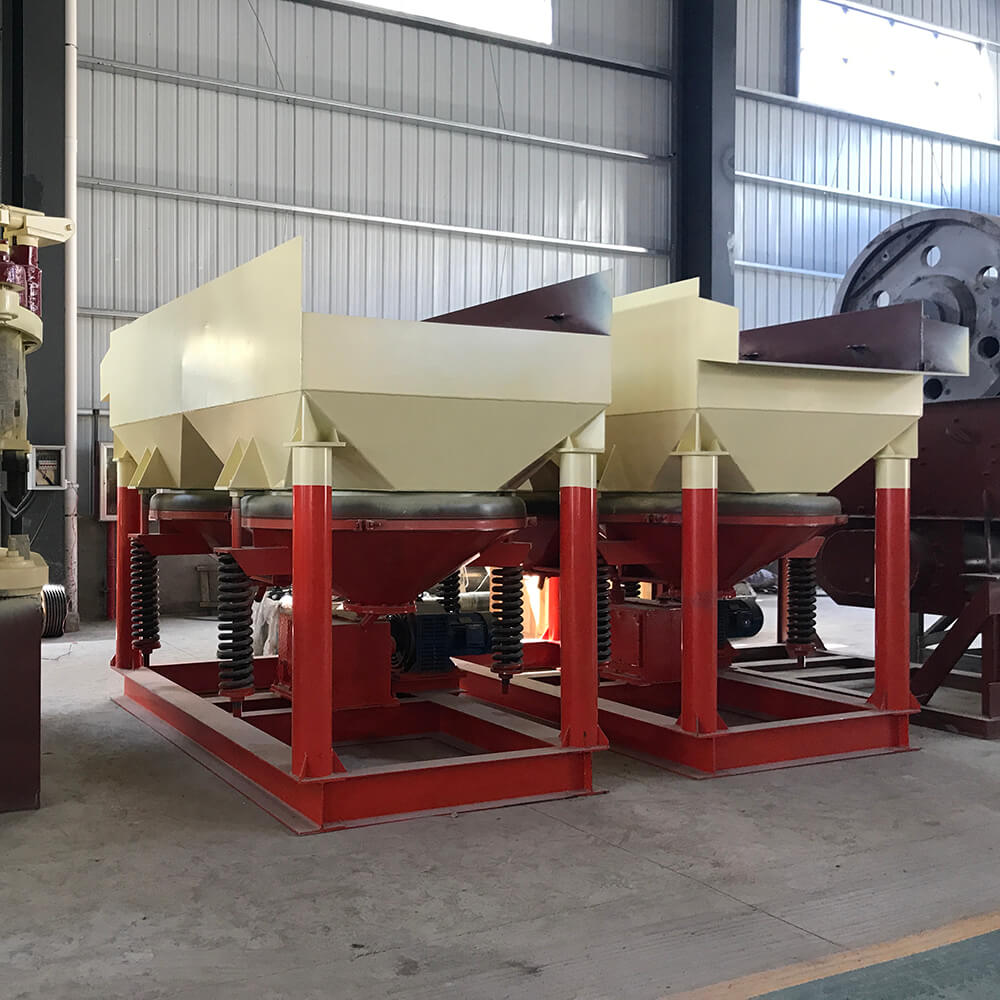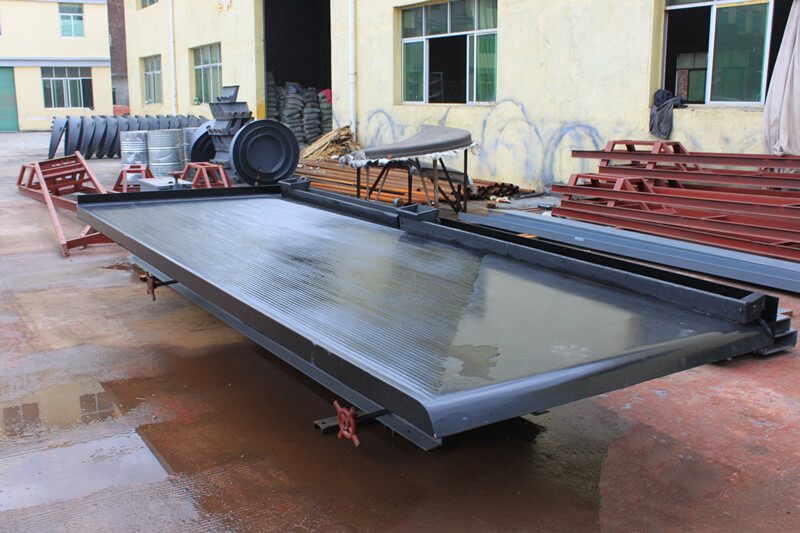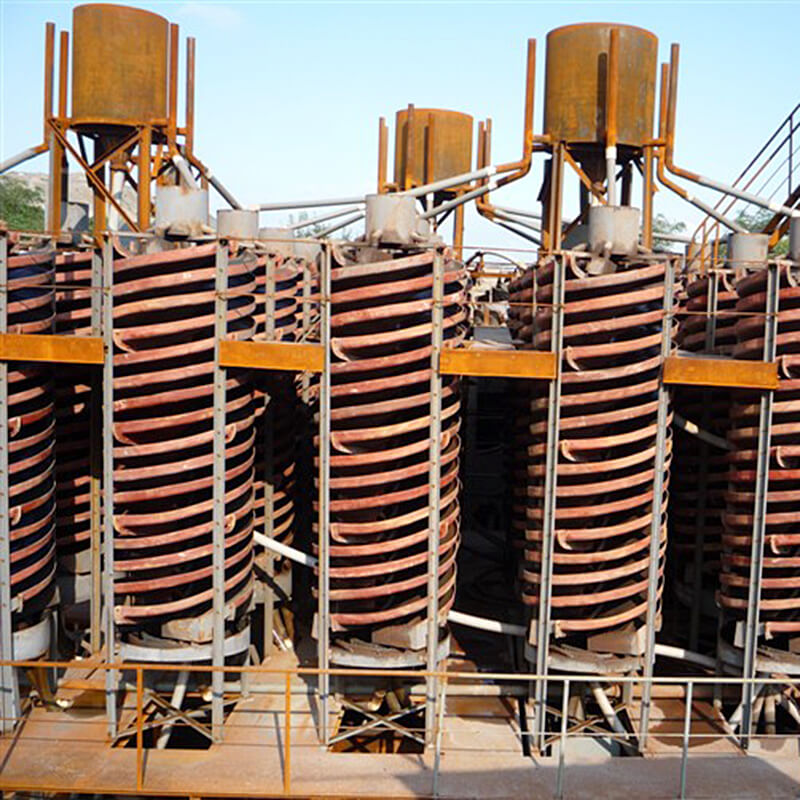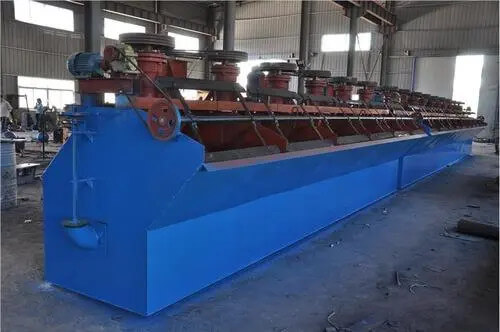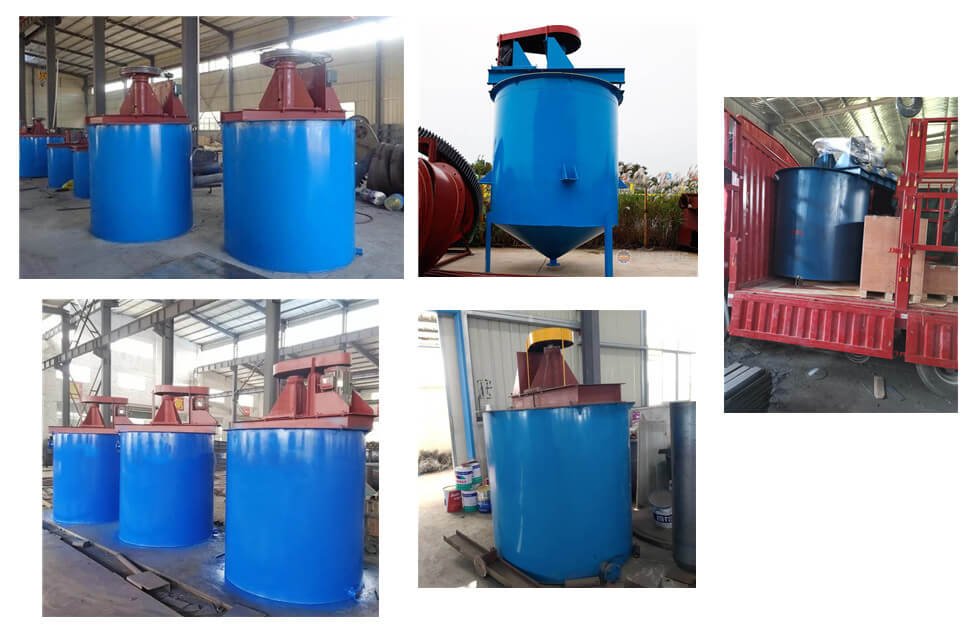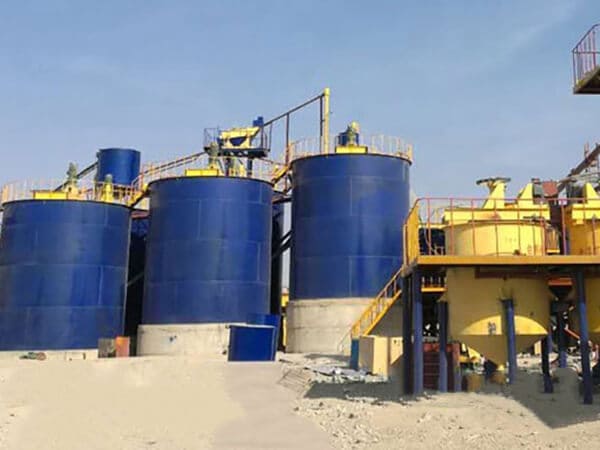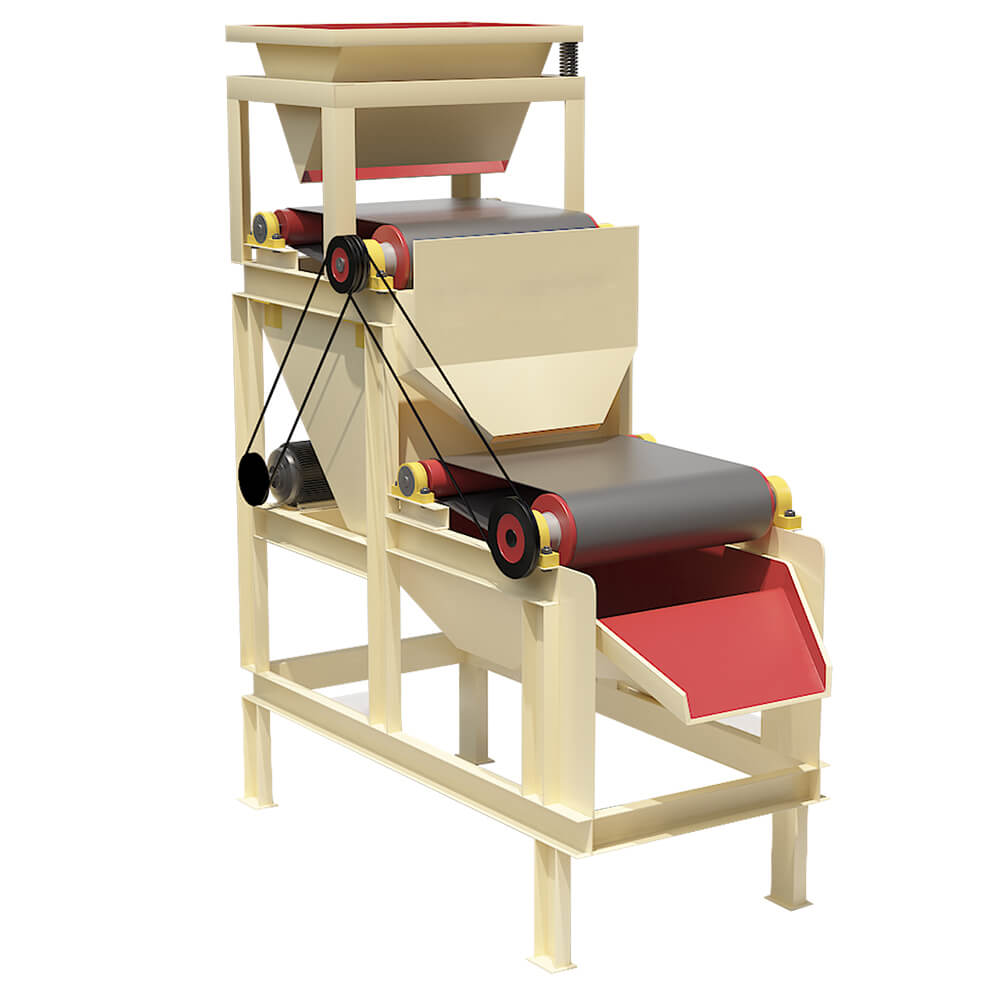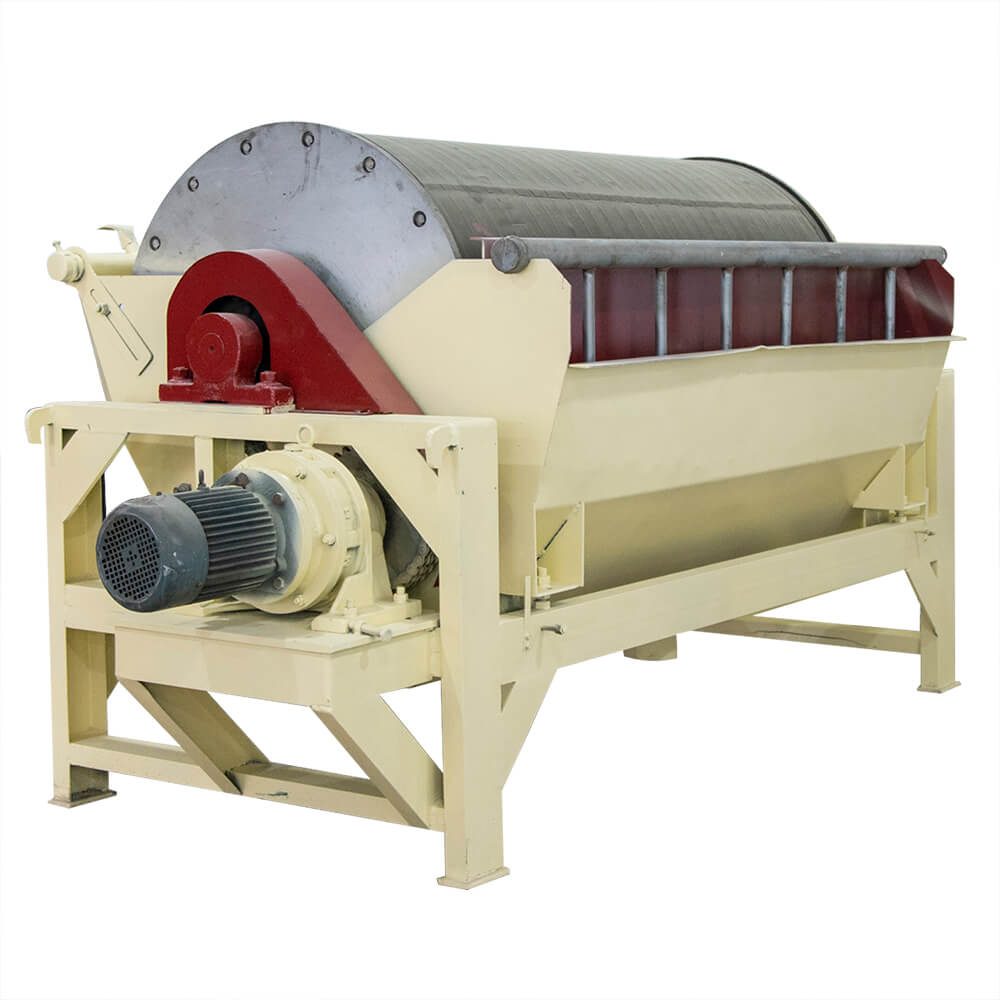Tin is a metal widely used in metallurgy, chemical industry, electronics, machinery, and other fields. Its beneficiation process is crucial for the effective utilization of tin ore resources. Tin ore dressing usually involves a variety of methods, among which gravity separation, flotation and magnetic separation are the most commonly used. The following will elaborate on the principles, scope of application, equipment, advantages, and disadvantages of these three methods in practical applications.
Tin Ore Dressing
Tin Ore Dressing – Gravity Separation
Principle
Gravity separation is a separation method that uses the density difference between tin and associated minerals. During the gravity separation process, the tin ore is layered and separated according to the density difference of different minerals under the action of external forces such as gravity and water flow, to achieve the purpose of separation.
Scope of application
Gravity separation is suitable for processing hard cassiterite, soft cassiterite, and wolframite in tin ore. Hard cassiterite usually contains a high tin content and a large density, significantly different from the density of waste rock so that gravity separation can achieve a good separation effect. Although soft cassiterite has a low tin content, the density difference is also large and suitable for gravity separation. In addition, minerals with large density differences such as wolframite are also suitable for gravity separation.
Equipment
Common equipment for gravity separation includes jigs, shaking tables, spiral chutes, etc. Jig concentrators are one of the most widely used gravity separation equipment, suitable for processing coarse and medium-sized cassiterite. The shaking table is mainly used to process fine-grained cassiterite, and its sorting effect is affected by factors such as material size, feed concentration, bed inclination, and water flow rate. The spiral chute is suitable for processing fine-grained materials, and its sorting efficiency is affected by factors such as material properties, feed volume, and spiral trough structure.
Advantages and Disadvantages
The advantages of gravity separation are simple operation, low energy consumption, low investment, and less environmental pollution. However, the gravity separation method has a poor sorting effect on tin ore materials with finer particle sizes and smaller density differences, and it causes greater wear and tear on the equipment and has higher maintenance costs. In addition, the gravity separation method has limited processing capacity for associated minerals in tin ore such as sulfides and oxides.
Tin Ore Dressing – Flotation
Principle
Flotation is a method of separation using the difference in surface properties between tin ore and pulp. During the flotation process, the hydrophobicity of the surface of tin ore particles enables them to adhere to bubbles and float to the surface of the pulp with the bubbles, thereby separating tin ore from waste rock.
Scope of application
Flotation is suitable for treating fine-grained tin ore and tin ore materials that are difficult to treat by gravity separation. For associated minerals such as sulfides and oxides in tin ore, flotation has a good separation effect. In addition, flotation can also be used to recover valuable elements such as tungsten and bismuth in tin ore.
Equipment
Common equipment for flotation includes a flotation machine, stirring tank, slurry conveying system, etc. A flotation machine is the core equipment for realizing tin ore flotation, and its types are diverse, such as mechanical stirring flotation machines, aerated flotation machines, etc. A stirring tank and slurry conveying system are used to ensure the uniformity and fluidity of slurry to meet the requirements of the flotation process.
Advantages and Disadvantages
The advantage of flotation is that it can process fine-grained tin ore and associated minerals, and the sorting effect is good. However, the flotation method has problems such as high energy consumption, large reagent consumption, and serious environmental pollution. In addition, the flotation method has limited processing capacity for high-density minerals such as hard cassiterite in tin ore.
Tin Ore Dressing – Magnetic Separation
Principle
Magnetic separation is a method of separation using the magnetic difference between tin ore and associated minerals. During the magnetic separation process, when the tin ore material passes through the magnetic field, the magnetic mineral particles will be adsorbed on the magnetic system of the magnetic separator by the magnetic field force, thereby separating the tin ore from the waste rock.
Scope of application
Magnetic separation is mainly suitable for processing magnetic minerals such as magnetite and hematite in hard cassiterite. The density difference between these magnetic minerals and cassiterite is small, but the magnetic difference is large, so the magnetic separation method can achieve a better separation effect.
Equipment
The equipment commonly used in magnetic separation includes dry magnetic separators and wet magnetic separators. Dry magnetic separators are suitable for processing dry or low-humidity tin ore materials, while wet magnetic separators are suitable for processing tin ore materials with high water content. The magnetic field strength and magnetic system structure of the magnetic separator have an important influence on the separation effect.
Advantages and Disadvantages
The advantages of magnetic separation are simple operation, low investment, and less environmental pollution. However, the magnetic separation method has limited processing capacity for non-magnetic minerals in tin ore and has a poor separation effect on minerals with fine particle size and weak magnetism. In addition, the magnetic separation method also needs to pay attention to issues such as magnetic field strength and equipment maintenance to ensure the separation effect.
In summary, the three commonly used methods for tin ore beneficiation have their advantages and disadvantages and scope of application. In practical applications, it is necessary to comprehensively consider and select appropriate beneficiation methods based on factors such as the specific properties of tin ore, beneficiation purpose, and economic benefits. At the same time, with the continuous advancement of science and technology and the improvement of environmental protection requirements, tin ore beneficiation technology is also constantly developing and innovating to meet higher resource utilization efficiency and environmental protection requirements.

